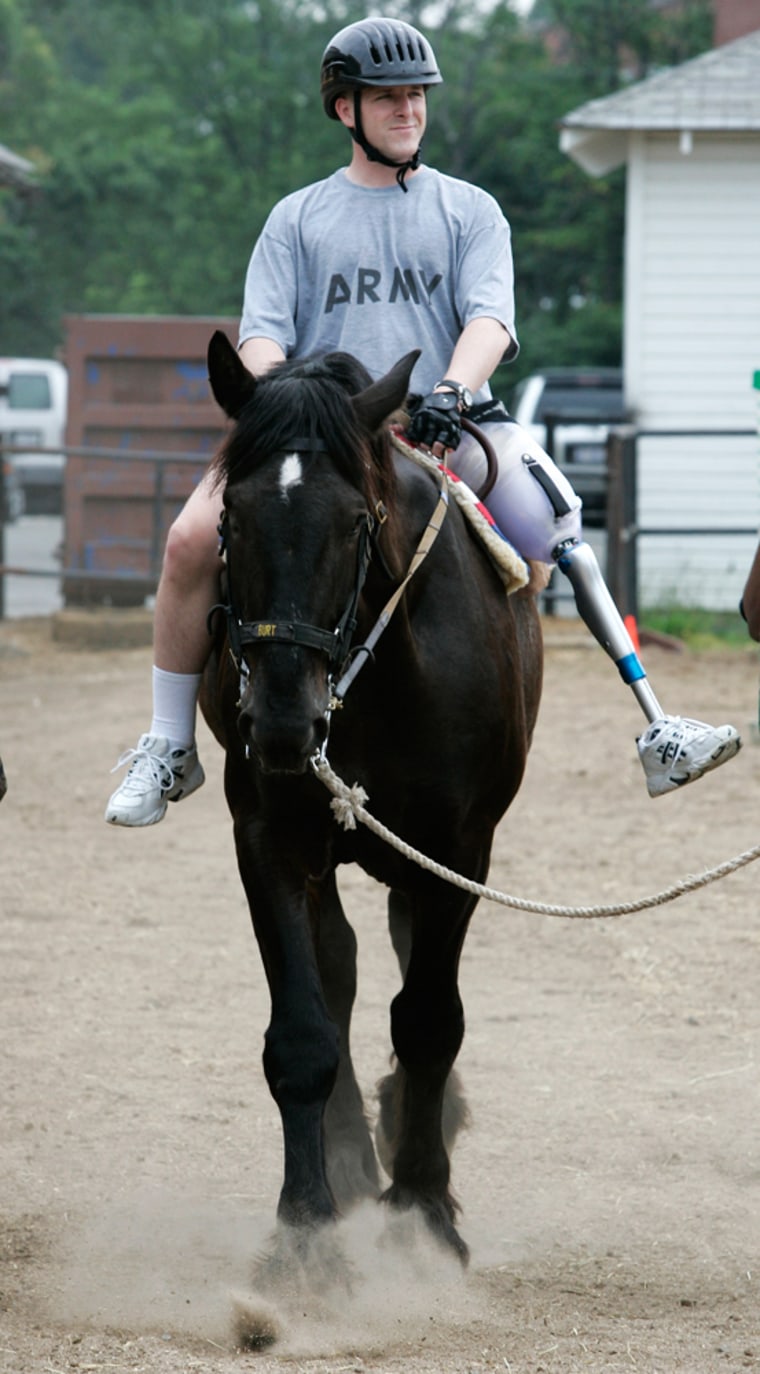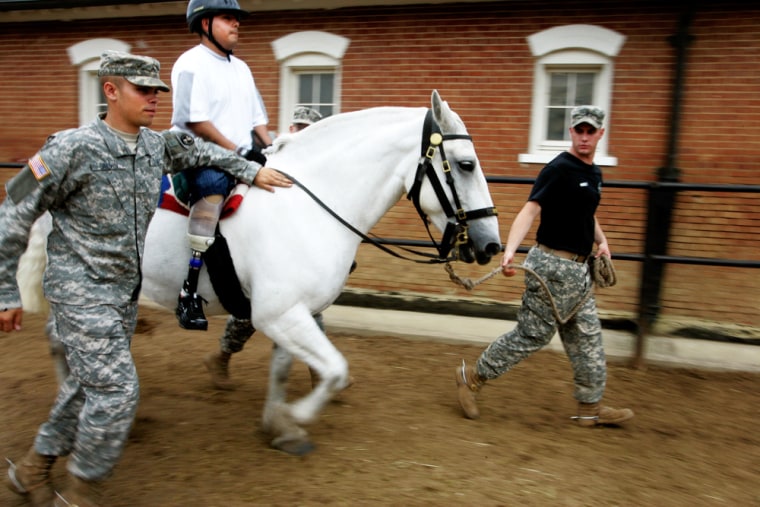Spec. Maxwell Ramsey made small kissing sounds as he tried to coax Wylie, a muscular black Percheron horse, over to the platform where the soldier stood. He swung the metal and plastic limb that is his new left leg over Wylie’s back and sat down in the saddle.
“Relax your leg. Take a deep breath. Remember you are sitting on a big old cushion,” Mary Jo Beckman, a therapeutic riding instructor, said to Ramsey as he and Wylie headed out into a dusty yard at Fort Myer.
The black and white horses that usually pull caissons during military funerals at neighboring Arlington National Cemetery are helping soldiers such as Ramsey in their long struggle to learn to walk again, to regain strength and to believe in their new limbs.
“It gives me the confidence to know that I lost an arm and a leg but not the ability to do certain things,” 1st Lt. Ryan Kules, 25, a Tempe, Ariz., native who was injured by a roadside bomb in Iraq in November, said Friday.
The soldiers and the horses from the 3rd U.S. Infantry Regiment, also known as The Old Guard, are part of a pilot program at the Walter Reed Army Medical Center in nearby Washington to see if troops with prosthetic legs can regain some mobility through horseback riding. The Army hospital has also experimented with other sports, such as skiing, to help amputees regain balance needed to walk again.
People, horses use same walking motion
Therapeutic riding is widely used for people with physical, emotional and mental disabilities, Beckman said. People and horses walk using the same circular motion in their hips, she said, and riding on the back of a horse can help a person feel and recall that movement.

“Their bodies are getting moved as if they are walking when they are sitting on the horse,” Beckman said.
Soldiers from the unit walked alongside Ramsey and Wylie throughout the session in the yard surrounded by the brick stables that house the horses.
“It’s all about soldiers helping soldiers,” said Col. Bob Pricone, commander of the Old Guard.
Ramsey lost much of his left leg in March when a shell buried in a road exploded as his Humvee passed. Friday marked his third session with Wylie, and he hopes to recover faster than the year that the average amputee spends at Walter Reed.
One of the most difficult challenges is regaining balance in his left leg, he said. Riding a horse forces him to adjust his waist just to keep from falling off, which builds strength and balance in his body’s core.
“The way the horse walks, you have got to let your pelvis get into the rhythm of the horse,” said Ramsey, 36.
Dramatic recovery
Before they rode, a physical therapist tested the reaction times of Ramsey, Kules, and Sgt. Christian Valle, who lost most of both legs, to simple tasks. They were asked to get out of a chair, walk a few feet, then return to sit down. They also stood on one leg to see how long they could balance.
Kules, who has done therapeutic riding three times, said he has seen his times improve in both tests. When he first began a few weeks ago, it took him 20 seconds to get out of the chair and sit back down. He did it in 13 seconds Friday morning.
Such an improvement demonstrates the dramatic recovery Kules has made since his parents first saw him badly wounded in a hospital bed in Germany six months ago, said his mother, Canice Kules of Scottsdale, Ariz. He has become more comfortable with the prosthetic leg as he adjusts to it, she said.
“You see it becoming a part of him,” Canice Kules said as she stood at the fence watching her son ride. “It takes a lot of courage to get up there on a horse with one arm and one leg.”
